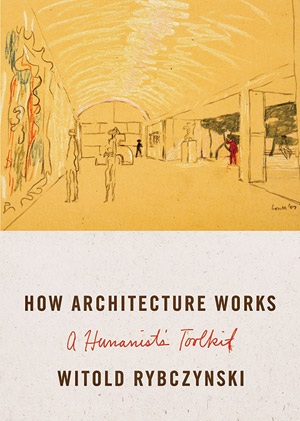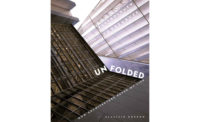Sense and Sensibility in Design Today
At several points throughout his new book, Witold Rybczynski invokes Steen Eiler Rasmussen's classic text Experiencing Architecture (1959). Rybczynski, until recently professor at the University of Pennsylvania, has served as an architectural critic for an array of publications. When he studied architecture in the late 1960s at McGill University, he tells us one of his teachers was a Rasmussen disciple. In How Architecture Works: A Humanist's Toolkit, Rybczynski follows faithfully the central tenets of his predecessor. Both books organize architectural design into a series of sensible categories—concepts, structure, plan, skin, and so on. Both books place a high priority on the experience of the inhabitant of architecture rather than the process of design. And both books are written in a fluid, accessible style, although here Rybczynski arguably surpasses his model: his writing is well paced and never forced.

But there similarities end. Rasmussen's book served as a reorientation of a doctrinaire Modernism. In emphasizing the personal and experiential aspects of architecture, Rasmussen spurred those searching for a more “human” approach to Modern design. How Architecture Works could have served a similar purpose had it also been written more than 50 years ago. And there is not much to indicate it wasn't. Choosing well-worn figures (Mies van der Rohe, Wright, Le Corbusier) and supplementing with equally anodyne contemporary architects (Richard Rogers, Norman Foster, Renzo Piano) doesn't exactly advance the argument.
There is no real discussion of global practice or of environmental concerns—aside from a single paragraph warning of the perils of green-washing. Rybczynski offers a few measured, tepid defenses of traditionalist design—specifically work by Robert A.M. Stern—but, beyond that, he doesn't seem to believe in much at all. This lack of conviction is curious, particularly in contrast to the architects he cites. Take his well-chosen quotation from Louis Kahn: “You don't know what the building is, really, unless you have a belief behind the building, a belief in its identity in the way of life of man.” While grandiose, this language reveals Kahn's searching approach to architecture. Rybczynski gently chides Kahn for his mistakes and excesses and leaves it at that. He admonishes others for their inflexible style (Richard Meier) or abstruse justifications (Venturi Scott Brown)—seemingly exasperated by a supposed “overintellectualization” of the discipline. His central call, then, is for sense and sensibility—for measure, moderation, and a fine-grained orientation to architectural problems. Though this book is a pleasure to read, opening a door for young students and others entering the field, it is an inadequate match to our less than sensible times.





Post a comment to this article
Report Abusive Comment